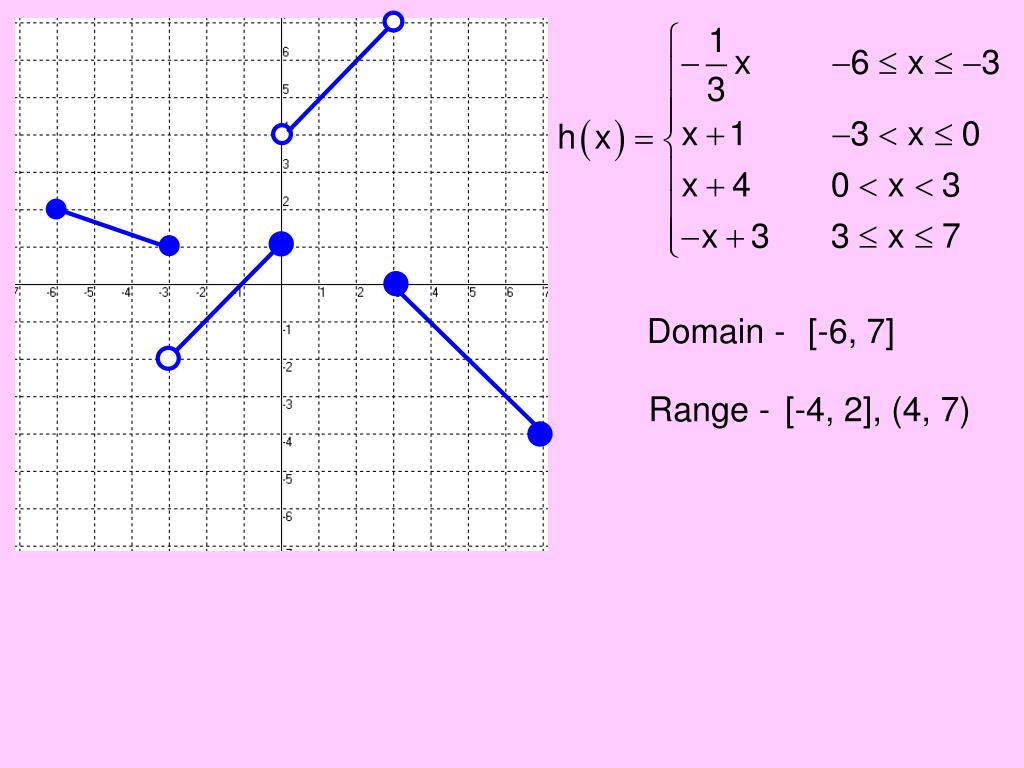
And to do that, let's just think aboutĪs x goes, but x varies or x can be any values in this Outputs that this function can take on, or all the Is, this is the set of all inputs, oh sorry, this is the set of all Let's think about the range, and the range Now another way to say this and kind of less math-y notation is x, x can be any real number, any the real number such that, such that negative 6 is less than x is less than or equal to 6. So x at the high end is said to be less than As soon as we cross negative 3, we fall into this clause up to 4, butĪs soon as we get 4, we're in this clause up to and including 6. So as x goes, I just wanna make sure that we fill in all the gaps between x being a greater than negative 6 and Negative 6 is less than x and I also think about the upper bound. I could say x is a member of the real numbers such that, such that negative 6 is less than x. Let me write this way x, I could write it more math-y. Of our domain is defined right over there, so we say, we could say, negative 6 is less than x and I'm leaving. So this part right over here, the low end So, to fall into one of these three, you have And if x doesn't fall into one of those threeĬonditions, well this function g is just not defined. It is just saying, look, if x falls into one of these threeĬonditions, apply this. It doesn't say hey do this in all other cases for x. It doesn't, it doesn't fall into one of these three intervals. If it, if x is negative 6 or or lower than that. The domain is the set of all inputs for which this function is defined, and our input

g of x is defined by a a line or the line changes depending Show( plot( f, 0, 4, figsize=, color=(0.Right over here for different intervals of x. This is avoided by constructing a symbolic function using function.į = piecewise(, ,2-x], ] ) Including a numeric Python-callable function directly in piecewise leads to the error message unable to simplify to float approximation. Previously this led to the opaque error message local variable 'G' referenced before assignment. Specifying a partial domain when plotting a piecewise function is supported in the current version of SageMath. If the domains are all open then points on the boundaries will not be included, and making all domains closed leads to the error message domains must be pairwise disjoint.


To ensure a piecewise function consisting of several domains is valid at all points in the complete domain, alternately specify successive domains as open and closed. Attempting to specify a mixed domain ( ] or [ ) leads to Python syntax errors. Closed domains are specified with square brackets. Open domains are specified with parentheses ( ). The current version of SageMath makes a distinction for this function between open and closed domains. Symbolic functions entail significant overhead that can make piecewise unsuitable for purely numeric calculations. Symbolic functions are constructed from numeric functions using function. The argument function for each domain must be the name of a symbolic function, not a numeric function. The optional var keyword argument specifies which single symbolic variable is the argument of the complete function.

Consecutive domains should share an endpoint to avoid unexpected errors. ], var= variable )Ī piecewise function in SageMath defined in part by function on the domain from begin to end.


 0 kommentar(er)
0 kommentar(er)
